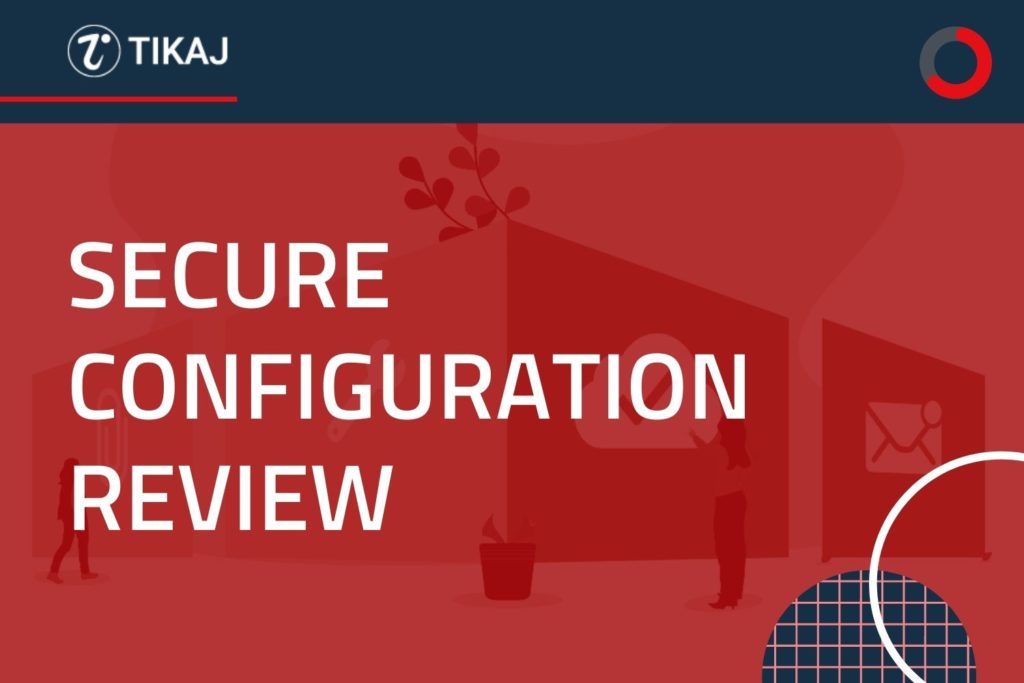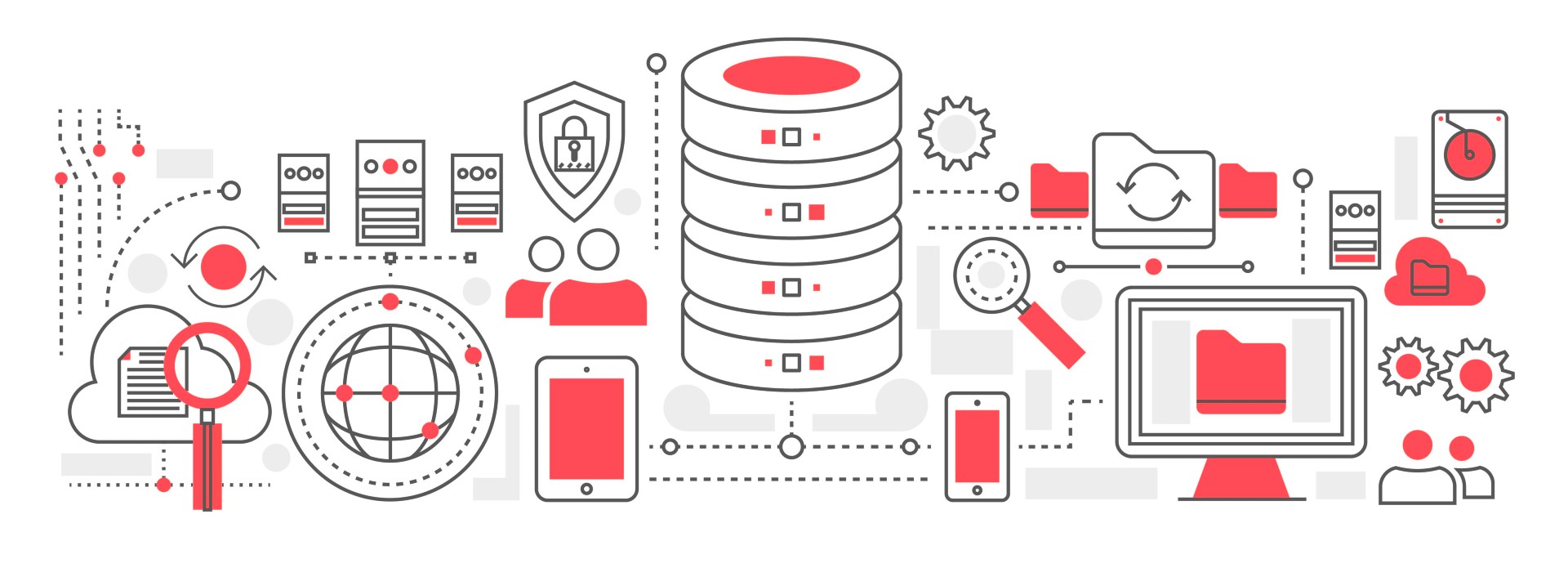Secure Configuration Review – Maximizing Security 101

“As each organisation’s IT system is different” regardless of how it looks, any mistakes when it comes to the Installation or Configuration of Networks, Servers, and other Infrastructure can cause a ripple effect through your entire organisation. Therein security of network devices is crucial for the operations of an organization. A single compromise may result in a huge loss of revenue and productivity.
Table of Contents
Introduction
Security breaches can have catastrophic consequences, both for businesses and individuals. With growing dependence on technology, risk of data breaches has increased significantly. Cybercriminals have become more sophisticated, and businesses need to take proactive measures to protect themselves. One effective way to mitigate these risks is through secure configuration review.
To learn about CyberCrime, you can read our guide “CyberCrime explained from zero and what you should do ?“.
What is Secure Configuration Review?
Secure Configuration Review is process of examining and assessing an organization’s IT systems and applications to identify vulnerabilities, misconfigurations, and other security risks. It is a crucial part of any security strategy, as it helps to identify and address security gaps before they can be exploited by malicious actors.
These reviews intends to provide an appropriate level of security to portion which has threats by the process of identifying portions and rating each portion on the basis of threat it can cause. The goal is to identify a portion of network, assign a threat rating to each portion, and apply an appropriate level of security. Post that we can identify risks to network, network resources, and data. The primary objective is to maintain a workable balance between security and required access to resources.

Why it’s Important ?
Secure Configuration Review is essential for every organization that wants to protect its data and reputation. Cybercriminals are constantly finding new ways to breach security systems, and it’s crucial to stay ahead of them. By conducting regular configuration reviews, organizations can identify vulnerabilities and weaknesses in their systems and take necessary steps to fix them.
It plays a very important role, as a detailed review and verification of configuration settings of IT infrastructure components including systems, network devices & applications measures security effectiveness of IT environment.
At times, it might happen that expected secure configuration settings may not be implemented or somehow missed, while you deploy, maintain, enhance computing systems/network/network security devices. Poorly configured components of IT Infrastructure can become a weak link that can allow adversaries to gain unauthorized access, and making their way to possible outages and security breaches.
What are common security risks due to misconfiguration ?
There are several common security risks associated with improper configuration. These include:
- Unsecured default settings: Many applications and systems come with default settings that are not secure. Attackers can exploit these settings to gain unauthorized access to data and systems. In case of a router, for example, this could be a predefined password, or in case of an operating system, it could be applications that come preinstalled.
- Misconfigured firewalls: Firewall misconfiguration can lead to unauthorized access to sensitive data, making it important to regularly review and update firewall rules.
- Insufficient access controls: Improper access controls can lead to unauthorized access to sensitive data, making it important to ensure that access controls are correctly configured and enforced.
- Lack of reviewing – It’s easier and more convenient to start using new devices or software with their default settings, but it’s not most secure. Accepting default settings without reviewing them can create serious security issues, and can allow cyber attackers to gain easy, unauthorized access to your data.
- Web server and application server – Configurations play a crucial role in cyber security. Failure to properly configure your server’s each aspect from web to any application can lead to a wide variety of security problems.
- Computers and network devices should also be configured to minimize number of inherent vulnerabilities and provide only services required to fulfil their intended function.
A typical secure configuration review activity is conducted in a white-box model where assessment team has access to IT infrastructure configuration files to identify misconfigurations.
Security configuration review checklist and examples
A. Cloud Infrastructure
Cloud security configuration review is process of examining and assessing an organization’s cloud infrastructure like AWS, Azure etc. to ensure that it is configured securely and meets regulatory requirements. It is no different than regular infrastructure except there are differences in security control and access control processes which are easy to miss in cloud.
B. Network Devices
- Firewall Rule Review : Firewall Rule Review involves reviewing rules and policies of your firewall to ensure they are up to date and effective in protecting your network from unauthorized access.
- VLAN Review : VLAN configurations are reviewed to ensure that they are properly set up, and that they adhere to best practices for security and performance. This may include reviewing VLAN access controls, examining VLAN tagging and trunking, and auditing VLAN memberships to ensure that they are configured correctly.
- Wireless: Wireless Review involves reviewing wireless network settings of your network devices to ensure they are configured correctly and secure.
C. Servers
- Hardening Standard : Hardening Standard involves reviewing security settings of your servers to ensure they are configured to industry best practices and standards. To get started you can follow NIST 800-123, it’s a general guide to server hardening.
- Database : The review includes best practices such as implementing strong authentication mechanisms, encrypting sensitive data, implementing appropriate access controls, regularly applying security patches and updates, monitoring and logging user activity, and developing a disaster recovery plan.
D. Applications
Generally there are guides provided by vendors and product owners like Office 365 Security Configurations, you can look for such guides for your infrastructure. Some of key pointers to look for are
- Access Control : Access Control Review involves reviewing access control settings of your applications to ensure they are configured to prevent unauthorized access.
- Authorization : Authorization Review involves reviewing authorization settings of your applications to ensure they are configured to limit access to sensitive data.
- Encryption : Encryption Review involves reviewing encryption settings of your applications to ensure sensitive data is encrypted during transmission and storage.
Security configuration review methodology
If you are not an security professional, you should consider hiring an experienced and expert team to review and analyze your network devices, servers, and applications. The team will use specialized tools and software to identify vulnerabilities and weaknesses in your systems. Once identified, the team will recommend solutions to fix them.
A typical review consists of 6 phases.
- Planning: Define scope of review, identify systems and applications to be reviewed, and assemble the review team.
- Inventory: Create an inventory of systems and applications to be reviewed.
- Assessment: Assess system’s and applications for vulnerabilities, misconfigurations, and other security risks.
- Remediation: Address identified vulnerabilities and misconfigurations.
- Testing: Verify that identified issues have been addressed and that the systems and applications are secure.
- Reporting: Document the review findings and recommendations for improving security.
What are benefits of secure configuration?
The process has many advantages like reducing the likelihood of revenue and productivity losses due to network device compromise, increases connectivity to accomplish corporate goals without compromising safety. At high level you can divide them in following benefits
Protecting Data and Reputation
It’s nothing new, but you can identify vulnerabilities and weaknesses in systems and take proactive steps to protect their data and reputation, just like penetration testing and vulnerability assessment.
Compliance with Regulations and Standards
Many industries have regulations and standards such as PCI DSS, HIPAA, and GDPR require organizations to maintain a secure network.
Cost-Effectiveness
You can save money in long run by fixing the vulnerabilities and weaknesses before they can be exploited by cybercriminals. Few configuration issues are not even picked up by scanners and VAPT audits.
How to prevent bad configuration ?
To ensure effectiveness of configuration review, it is important to follow best practices, including:
- Establish a configuration management process: Implement a process for managing IT system configurations, including regular reviews and updates.
- Define security standards: Develop security standards that define how IT systems and applications should be configured.
- Train staff: Ensure that staff members responsible for configuring and maintaining IT systems and applications are trained in security best practices. Conduct regular security awareness and training.
- Conduct security configuration audit: Regularly scan IT systems and applications for vulnerabilities, misconfigurations, and other security risks.
- Remove and disable unnecessary user accounts and change default or guessable account passwords to something non-obvious.
FAQs
What is the difference between a security audit and a Secure Configuration Review?
A security audit is a comprehensive review of an organization’s security measures, including policies, procedures, and systems. Configuration Review, on the other hand, focuses specifically on the security settings of network devices, servers, and applications.
How often should a secure Configuration Review be conducted?
It depends on size of organization and complexity of its systems. It’s recommended to conduct reviews at least once a year.
How long does a secure Configuration Review take?
It can take anywhere from a few days to a few weeks to complete. It actaully depends on organization to organizations systems.
How much does a review cost?
The cost depends on various factors, such as size and complexity of organization’s systems, scope of review, and experience and expertise of team conducting the review.
What are some common vulnerabilities that are identified during a review?
Some common vulnerabilities that are identified during a Secure Configuration Review include weak passwords, outdated software, misconfigured firewalls, and unsecured wireless networks. Addressing these vulnerabilities can help protect an organization’s data and reputation.
How can a configuration review reduce impact of a vulnerability scan?
A configuration review can help ensure that security controls are properly configured and effective, making it less likely that vulnerabilities will be present in first place.
Conclusion
Secure Configuration Review is a critical process that helps organizations protect their data and reputation from cyber threats. By identifying vulnerabilities and weaknesses in network devices, servers, and applications, organizations can take proactive steps to ensure their systems are secure. By following the tips and guidelines outlined in this article, you can conduct an effective security review and safeguard your organization against cyber threats. Remember, conducting these reviews is just one step in maintaining a secure network. It’s essential to stay up to date with latest security best practices, regularly update software and firmware, and educate employees on how to maintain a secure network.
In summary, Secure Configuration Review is a vital process that every organization should undertake to protect its data and reputation. By conducting regular reviews, hiring an experienced and expert team, choosing the right tools and software, and addressing vulnerabilities and weaknesses, organizations can ensure their systems are secure and stay ahead of cybercriminals.






